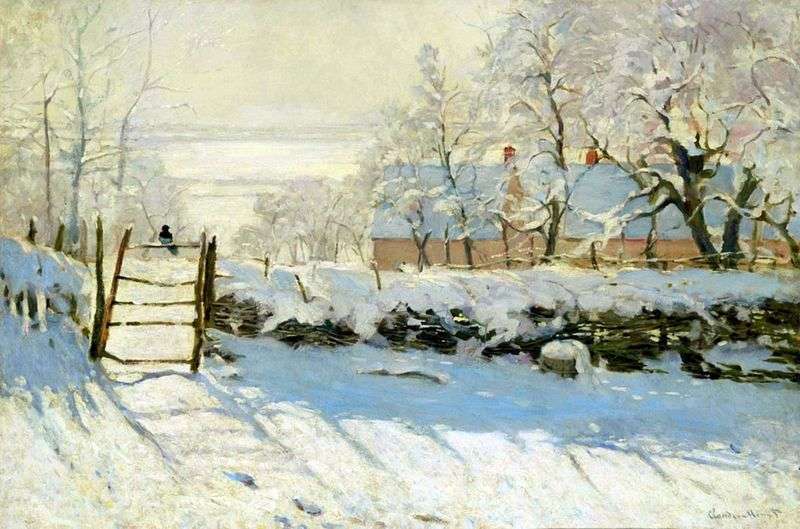
In the years 1868-1869, Claude Monet was engaged in writing the picture “Forty”, which stands out for its calmness. The work looks quite simple, it depicts a winter rural landscape, snow drifts, a flimsy fence and a small magpie sitting on a weak wicket. If you carefully examine the canvas, it is clear that the artist imposed large volumetric strokes, but this does not make the plot of the picture blurry, but rather gives it charm, forcing the viewer to peer into every detail.
Most of the paintings are made in white, which is not surprising for the winter landscape. But Monet creates a white color that can not be seen in any other existing in the world of paintings, because he was a master in mixing colors and selecting shades. The snow drifts in the picture played the role of another canvas for the artist, in which he depicted the falling shadows, which by their appearance make the picture colder, recalling the time of year. The image seems to be airy, the colors smoothly transform into each other, this is fascinating. The artist uses light and inconspicuous shades, but they all have some mysterious shine. This canvas can be considered an illustration of the poem by A. S. Pushkin “Winter Morning”.
Creating a winter landscape is not an easy thing, but Claude Monet was inspired by the works of Pierre-Auguste Renoir. He is driven by a great desire to share his impressions and love of nature with the audience. Even before the creation of this canvas, another well-known French artist Gustave Courbet, whose paintings are more dynamic and rich in detail, was creating the equally magnificent winter landscapes. Monet decides to deviate a little from the Courbet style and depicts only one tiny bird in the picture, which he later called “lonely note”.
This canvas was not accepted by society at that time, critics considered it too simple and boring, because the picture was too monotonous. Connoisseurs of that time were not ready for such a transition, because they were used to seeing bright and vivid pictures, and Monet “slipped” their calm landscape to them. Only after many years, the picture was rightfully appreciated and placed in a museum.
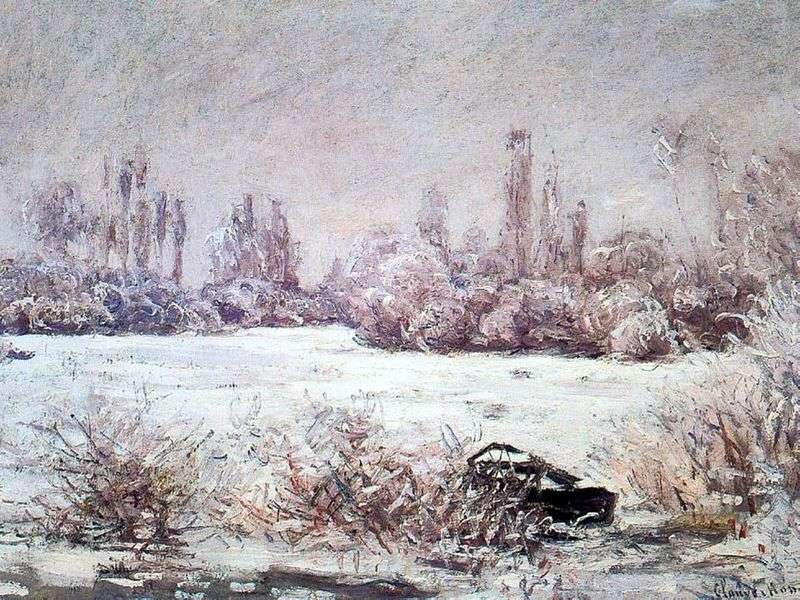 Frost by Claude Monet
Frost by Claude Monet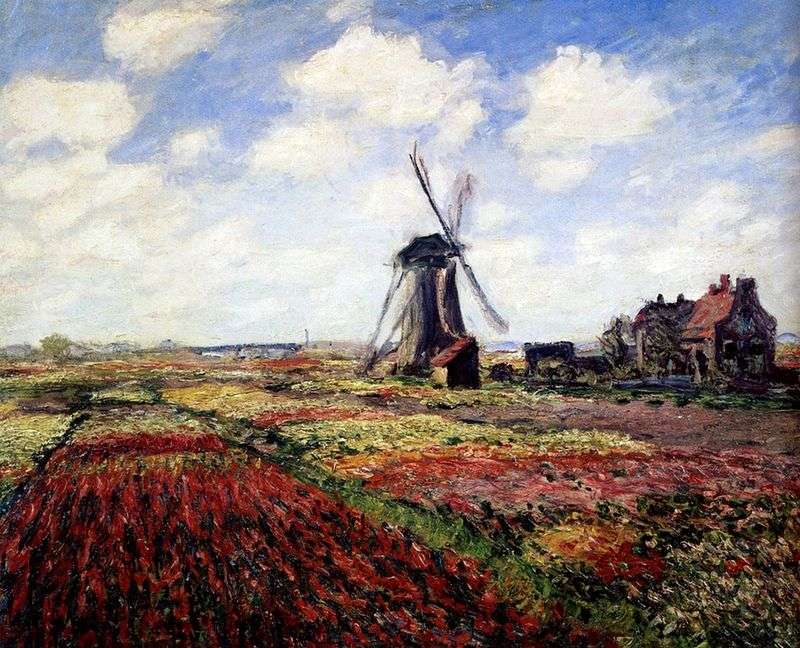 Holland Tulips by Claude Monet
Holland Tulips by Claude Monet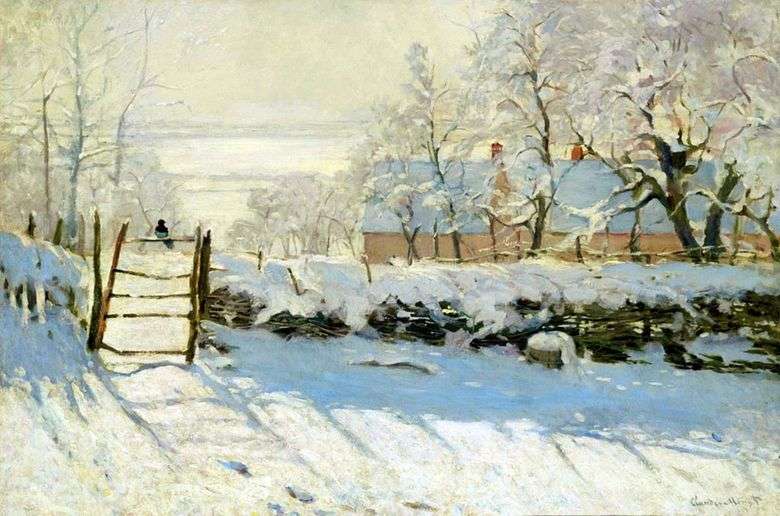 Soroka – Claude Monet
Soroka – Claude Monet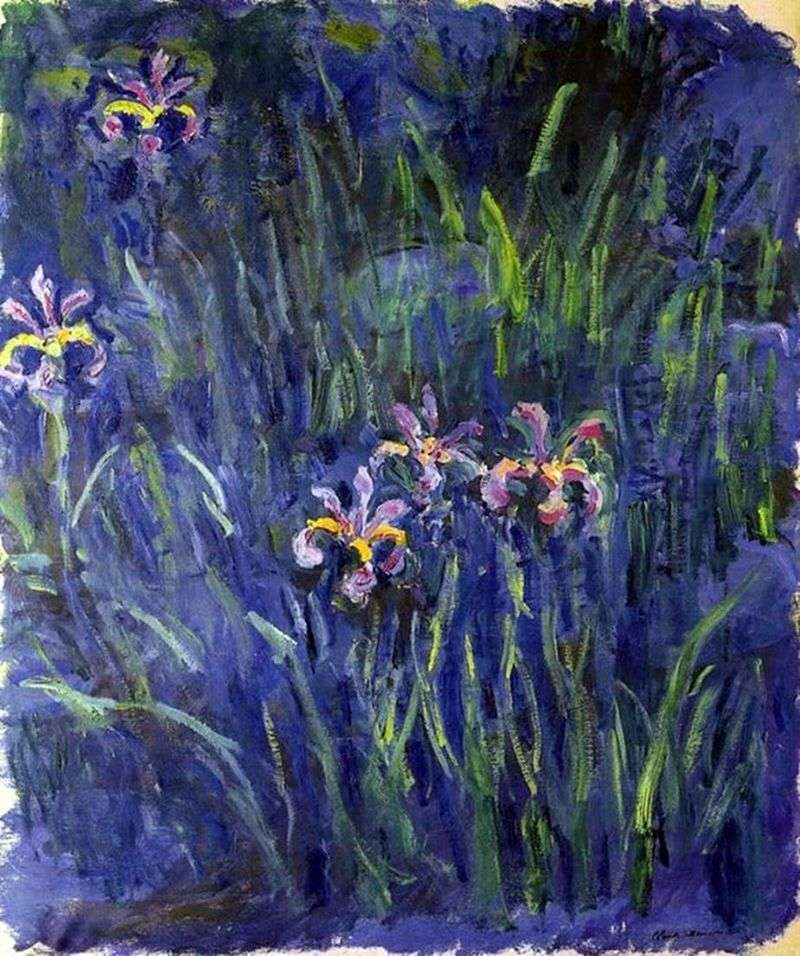 Irises by Claude Monet
Irises by Claude Monet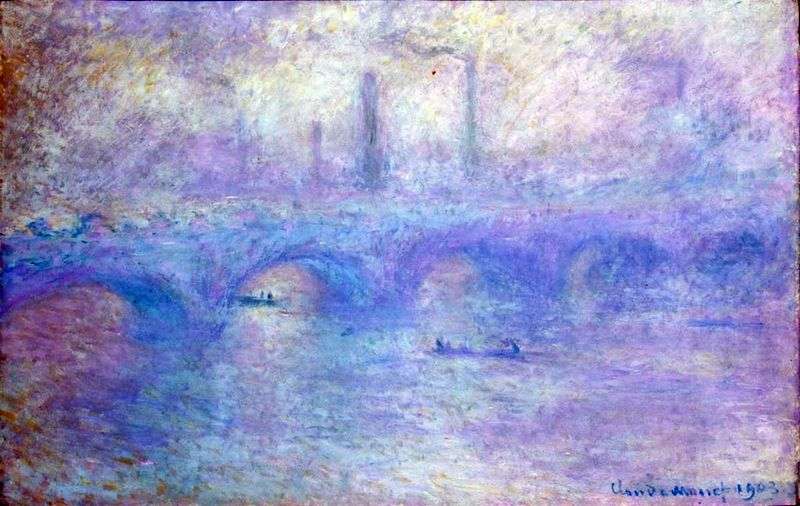 Waterloo Bridge. Fog Effect by Claude Monet
Waterloo Bridge. Fog Effect by Claude Monet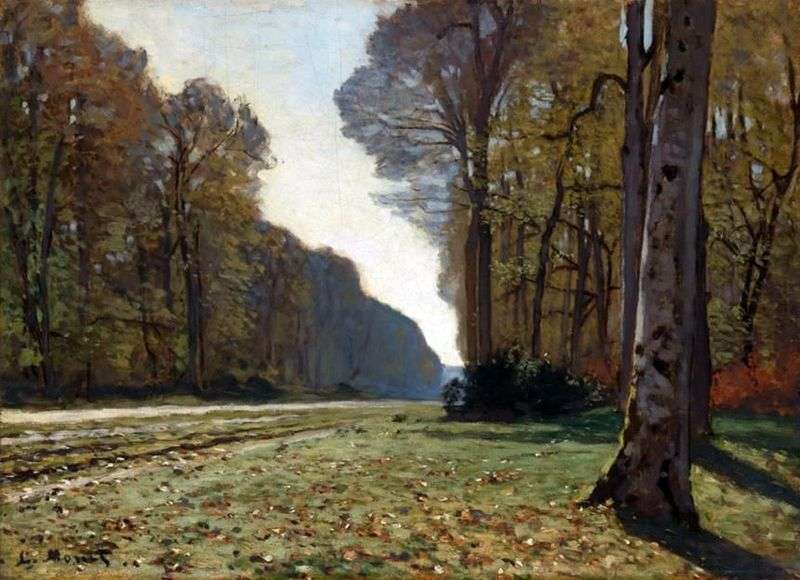 The road to Bass Bro, Fontainebleau by Claude Monet
The road to Bass Bro, Fontainebleau by Claude Monet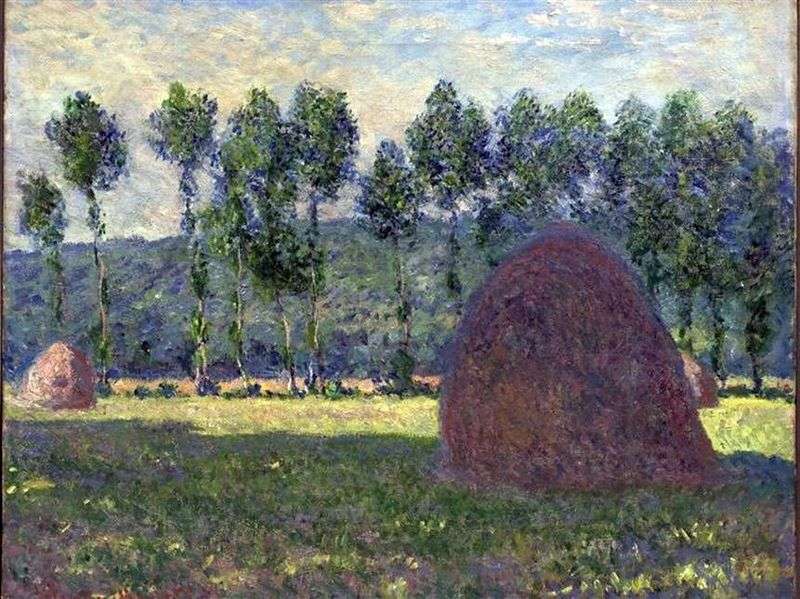 Haystack by Claude Monet
Haystack by Claude Monet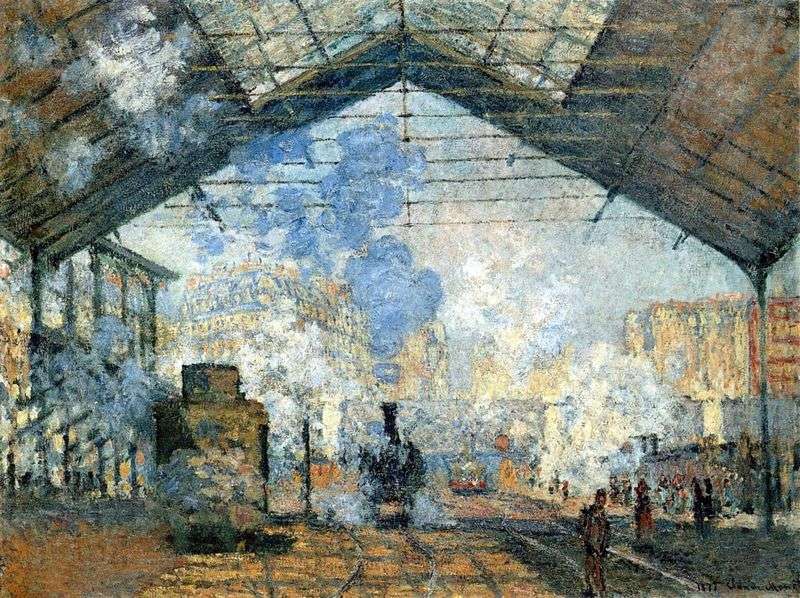 Station Saint Lazare by Claude Monet
Station Saint Lazare by Claude Monet